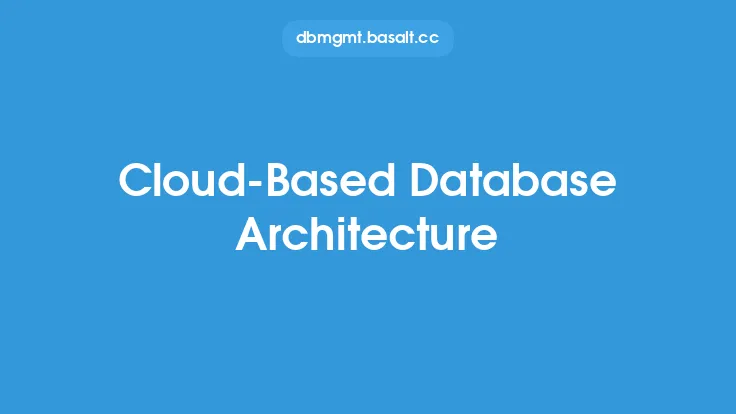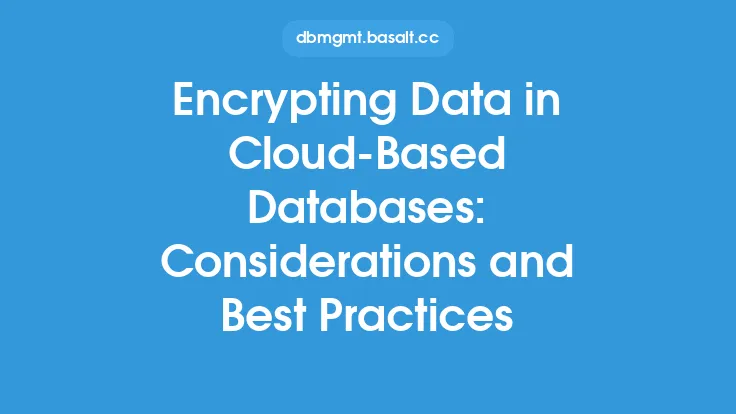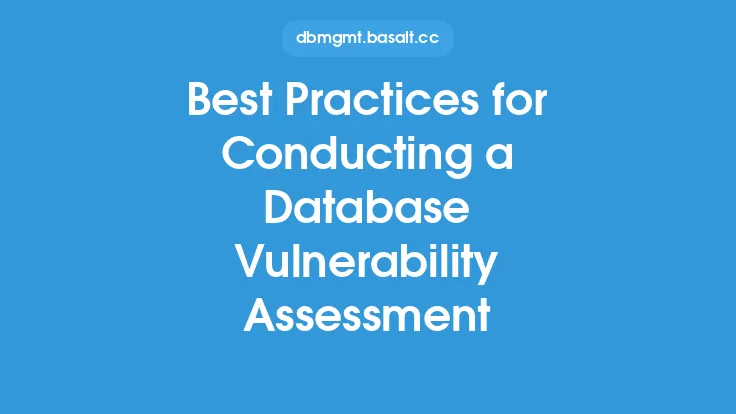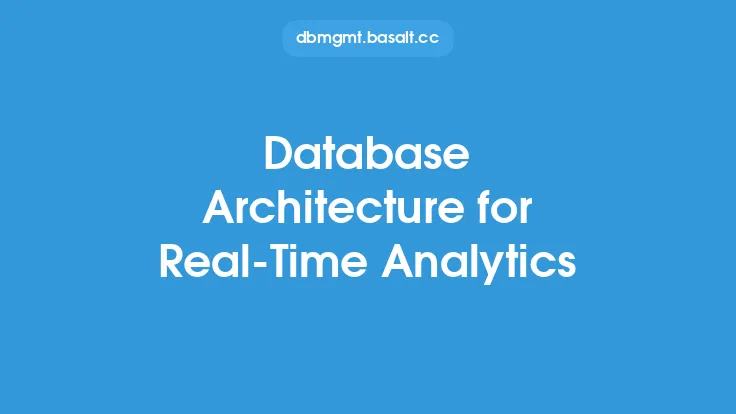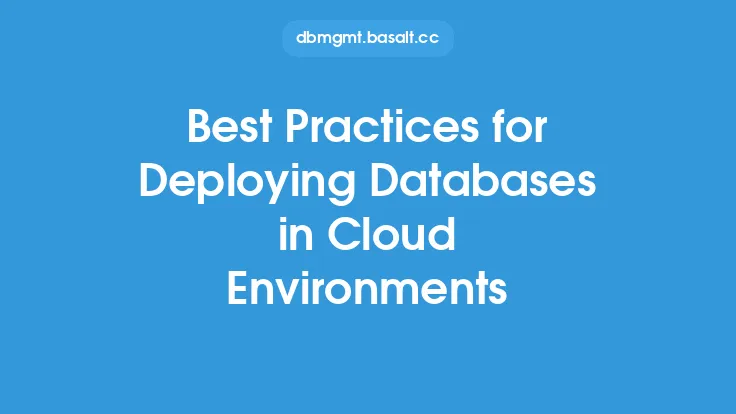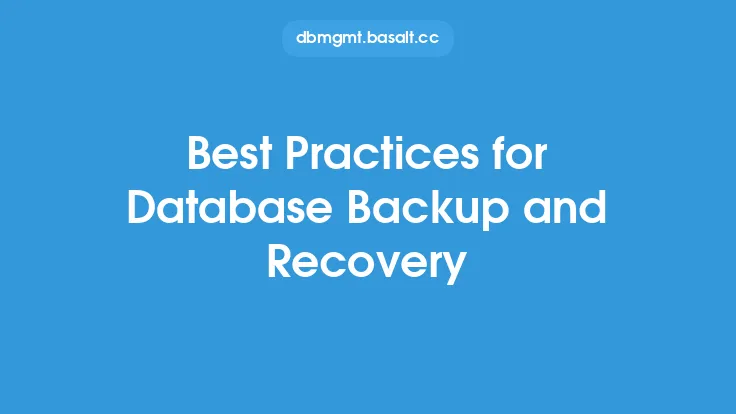When designing a cloud-native database architecture, there are several best practices to keep in mind to ensure scalability, reliability, and performance. Cloud-native databases are designed to take advantage of the cloud's scalability and flexibility, and they require a different approach than traditional on-premises databases. In this article, we will explore the key principles and best practices for designing a cloud-native database architecture.
Key Principles of Cloud-Native Database Architecture
Cloud-native database architecture is based on several key principles, including scalability, high availability, and flexibility. Scalability refers to the ability of the database to handle increasing amounts of data and traffic without a decrease in performance. High availability refers to the ability of the database to remain online and accessible even in the event of hardware or software failures. Flexibility refers to the ability of the database to adapt to changing requirements and workloads.
To achieve these principles, cloud-native databases often use a combination of technologies, including distributed databases, NoSQL databases, and cloud-based storage solutions. Distributed databases allow data to be spread across multiple nodes, which can be scaled up or down as needed. NoSQL databases provide flexible schema designs and high performance for large amounts of unstructured or semi-structured data. Cloud-based storage solutions provide scalable and durable storage for large amounts of data.
Designing for Scalability
Scalability is a critical aspect of cloud-native database architecture. To design for scalability, database architects should consider several factors, including data partitioning, load balancing, and autoscaling. Data partitioning involves dividing data into smaller, more manageable pieces, which can be spread across multiple nodes. Load balancing involves distributing traffic across multiple nodes to prevent any one node from becoming overwhelmed. Autoscaling involves automatically adding or removing nodes as needed to handle changes in traffic or workload.
Database architects can use several techniques to achieve scalability, including sharding, replication, and caching. Sharding involves dividing data into smaller pieces and spreading them across multiple nodes. Replication involves duplicating data across multiple nodes to improve availability and performance. Caching involves storing frequently accessed data in memory to improve performance.
Ensuring High Availability
High availability is another critical aspect of cloud-native database architecture. To ensure high availability, database architects should consider several factors, including redundancy, failover, and backup and recovery. Redundancy involves duplicating critical components, such as nodes or storage, to prevent single points of failure. Failover involves automatically switching to a backup component in the event of a failure. Backup and recovery involve regularly backing up data and having a plan in place to recover data in the event of a failure.
Database architects can use several techniques to achieve high availability, including master-slave replication, multi-master replication, and distributed transactions. Master-slave replication involves duplicating data across multiple nodes, with one node serving as the primary node and the others serving as backup nodes. Multi-master replication involves allowing multiple nodes to accept writes and replicating data across all nodes. Distributed transactions involve breaking down complex transactions into smaller, more manageable pieces, which can be executed across multiple nodes.
Choosing the Right Database Technology
Choosing the right database technology is critical to designing a cloud-native database architecture. There are several types of database technologies available, including relational databases, NoSQL databases, and cloud-native databases. Relational databases are traditional databases that use a fixed schema and are well-suited for structured data. NoSQL databases are designed for large amounts of unstructured or semi-structured data and provide flexible schema designs. Cloud-native databases are designed specifically for the cloud and provide scalable and flexible storage solutions.
Database architects should consider several factors when choosing a database technology, including data structure, scalability, and performance. Data structure refers to the way data is organized and stored in the database. Scalability refers to the ability of the database to handle increasing amounts of data and traffic. Performance refers to the speed and efficiency of the database.
Security and Compliance
Security and compliance are critical aspects of cloud-native database architecture. Database architects should consider several factors, including data encryption, access control, and auditing. Data encryption involves protecting data from unauthorized access by encrypting it both in transit and at rest. Access control involves controlling who has access to data and what actions they can perform. Auditing involves tracking and monitoring all activity on the database to detect and respond to security threats.
Database architects can use several techniques to achieve security and compliance, including encryption, firewalls, and access control lists. Encryption involves protecting data from unauthorized access by encrypting it both in transit and at rest. Firewalls involve controlling incoming and outgoing traffic to prevent unauthorized access. Access control lists involve controlling who has access to data and what actions they can perform.
Monitoring and Maintenance
Monitoring and maintenance are critical aspects of cloud-native database architecture. Database architects should consider several factors, including performance monitoring, error logging, and software updates. Performance monitoring involves tracking the performance of the database to detect and respond to issues. Error logging involves tracking and monitoring all errors on the database to detect and respond to security threats. Software updates involve regularly updating software to ensure the database has the latest security patches and features.
Database architects can use several techniques to achieve monitoring and maintenance, including metrics and logging, alerting and notification, and automation. Metrics and logging involve tracking and monitoring all activity on the database to detect and respond to issues. Alerting and notification involve automatically alerting and notifying administrators of issues. Automation involves automating routine tasks, such as software updates and backups, to improve efficiency and reduce errors.
Conclusion
Designing a cloud-native database architecture requires careful consideration of several factors, including scalability, high availability, and security. By following best practices, such as designing for scalability, ensuring high availability, and choosing the right database technology, database architects can create a cloud-native database architecture that is scalable, reliable, and performant. Additionally, by considering security and compliance, monitoring and maintenance, and automation, database architects can ensure the long-term success and reliability of their cloud-native database architecture.
